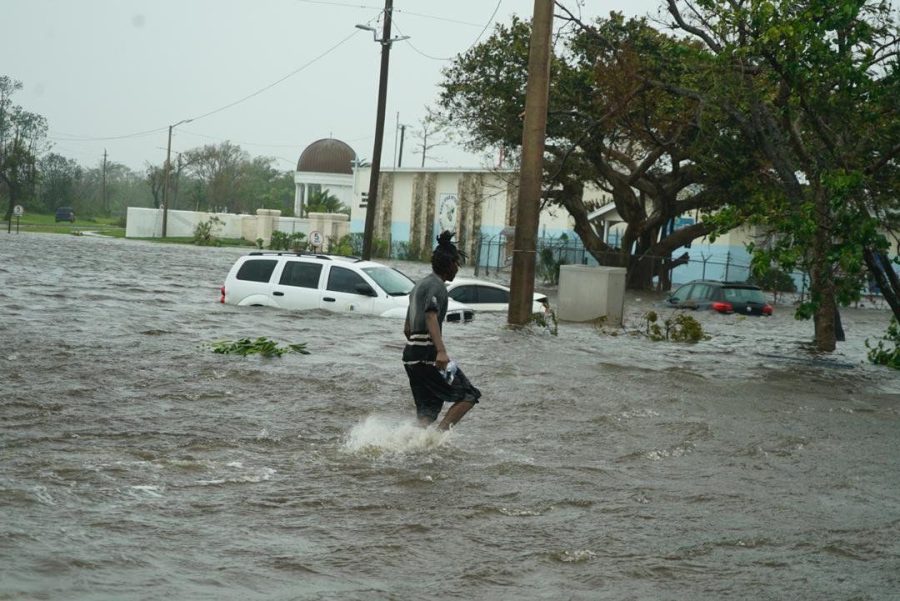Hurricane Dorian heads for the Carolinas, could bring ‘life-threatening storm surge’ to the coast
September 4, 2019
(CNN) — Hurricane Dorian strengthened slightly Wednesday afternoon as it heads toward the Carolinas, bypassing Florida.
Its core is forecast to approach the coast of South Carolina, near Charleston, on Thursday morning, the National Hurricane Center said. The storm is expected to run parallel along the coast of the Carolinas through Friday.
Any deviation to the left could bring the storm’s center onshore anywhere in the Carolinas, according to the NHC.
More than 1 million people living along the coast in South and North Carolina are under mandatory evacuation orders as the storm approaches.
The Category 2 is churning in the Atlantic Ocean about 150 miles south of Charleston, with maximum sustained winds of 110 mph — up from 105 mph earlier, the NHC said in its latest advisory. The hurricane left unprecedented destruction in the Bahamas but has thus far not caused significant damage along Florida’s coast.
As the storm turns northeast along the US coastline, it could cause devastating flooding Thursday in Charleston. The NHC warns of “life-threatening storm surge and dangerous winds, regardless of the exact track of Dorian’s center.”
“This is called the ‘Lowcountry’ for a reason,” former South Carolina Gov. Mark Sanford said. “I mean from here down to basically the Savannah River is exceedingly low land, and we’re prone to coastal flooding generally. You put a storm surge on top of that, (and) it’s real troublesome.”
A hurricane warning now extends from north of the Savannah River up to the North Carolina-Virginia border.
Dorian’s close proximity to the coast and the fact that its eye is 50 miles wide means that the storm’s eye wall — with wind gusts of 100 mph — could pass over land as it heads up the coast, CNN meteorologist Chad Myers said.
“If this storm is 30 miles offshore, that means the Carolina coast does, in fact, get the eye wall,” he said Wednesday morning. “It may not get the center of the eye, but who cares? The center of the eye is calm. It is the eye wall that is the most important part. And as it turns on up toward the north … even if it’s offshore, the eye wall could be very much onshore.”
The flooding risk is particularly acute for Charleston. The city is flat, just a few feet above sea level and next to the ocean, and it commonly floods during typical rain storms.
Dorian’s storm surge in Charleston could be higher than 10 feet, which is just 2 feet shy of the record set two decades ago by Hurricane Hugo, CNN meteorologist Dave Hennen said.
Mandatory evacuations went into effect on Monday for 830,000 residents along the coastline. Already, about 360,000 residents along South Carolina’s coast have evacuated as of 8 a.m. Wednesday, officials estimated. Charleston streets were quiet, and most stores and restaurants downtown were boarded up ahead of the storm.
In North Carolina, nearly 400,000 residents are under mandatory evacuation orders, state Joint Information Center spokeswoman Laura Leonard said late Wednesday morning.
Life-threatening storm surge in South Carolina
South Carolina Gov. Henry McMaster declared a state of emergency, tweeting Tuesday night there was “no more time for hesitation.”
“If you’re in an evacuation zone you need to evacuate now,” he said.
South Carolina coastal areas will see life-threatening storm surge and dangerous winds, according to the hurricane center, “regardless of the exact track of Dorian’s center.”
Charleston International Airport suspended operations from 3 p.m. ET on Wednesday until Friday morning, “depending on weather conditions,” officials there tweeted. Beaufort County will enforce a curfew from Wednesday at 10 p.m. through Thursday morning, its officials said.
The federal government also granted Cooper’s request for a federal disaster declaration before the storm on Tuesday.
“North Carolinians have faced tough storms before and we’re taking every precaution to make sure we’re prepared,” Cooper said.
Earlier this week, the governor ordered evacuations for the barrier islands.
3 dead in Florida
Florida avoided a major hurricane hit after preparing for nearly a week for Dorian’s uncertain impact.
Sixteen coastal counties in Florida were placed under mandatory evacuation orders, but most of those had been lifted by midday Wednesday.
Power was out Wednesday morning to thousands of households and businesses in Florida, mostly in Brevard, St. Johns and Volusia counties, the state emergency management website said. Still, that was a miniscule percentage of the state’s coastal population.
Three Florida residents have died in incidents related to storm preparation, including a 55-year-old Ocoee man who fell while trimming trees around his house, local officials reported.
In Georgia, Gov. Brian Kemp issued a mandatory evacuation order for six coastal counties.
“We’re looking at a 4 to 7 foot storm surge which is very high, higher than some of the more catastrophic storms that we’ve seen from a water perspective in the past,” Kemp said Tuesday evening.
“We need people to evacuate,” he said. “This is not a storm to mess with.”
Virginia also declared a state of emergency Tuesday, expecting possible flooding, storm surge, damaging winds and prolonged power outages, the Virginia Department of Emergency Management said.
“Current predictions indicate that it may affect parts of Virginia,” Gov. Ralph Northam said. “I am declaring a state of emergency to ensure that localities and communities have the appropriate level of assistance, and to coordinate the Commonwealth’s response to any potential impact from Hurricane Dorian.”

























